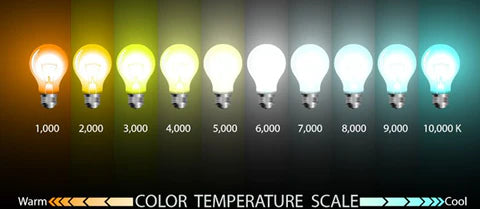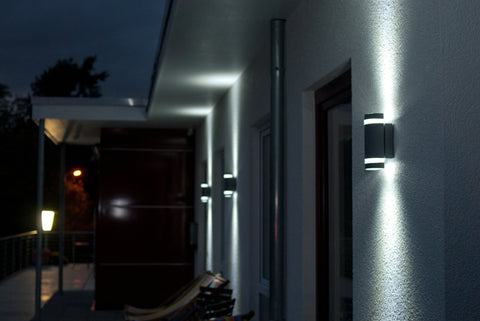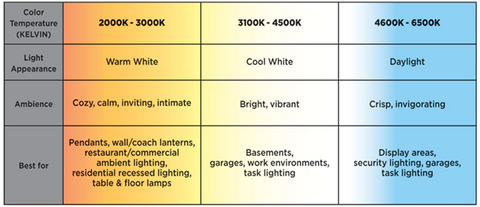Understanding Colour Temperature
Have you ever noticed that some lights emit a warm yellow light while others emit a colder, almost blue light? This difference is down to the colour temperature.
WHAT IS COLOUR TEMPERATURE?
'Colour Temperature', or Correlated Colour Temperature (CCT), describes the colour tint of light. The colour temperature of light ranges from 'warmer light' at the lower end of the scale, including red and yellow shades of light, up to 'cooler light', including white and blue hues of light.
WHAT ARE KELVINS?
Kelvins (K) are the measurement used to describe a light source's Colour Temperature (CCT). For lighting products, Kelvins are typically measured on a scale from 1,000 to 10,000. The higher up the scale you go, the 'colder' the colour temperature of the light. Colour temperature starts with a red light at 1000 Kelvins and goes through orange, yellow, white and blue light - in a range of shades - up to 10,000 Kelvins. The colour temperature chart below demonstrates the Kelvin scale.
COLOUR TEMPERATURE CHART

WHY IS COLOUR TEMPERATURE IMPORTANT?
When choosing your lighting, it is important to consider the colour temperature of the product to create the desired atmosphere around your home.
For example, a more traditional style home such as a cottage may suit a warmer colour temperature. Conversely, a more modern minimalist style home may suit a colder, whiter light.
Suppose you want to create a relaxed and welcoming environment. In that case, you will tend to select a light or bulb with a warmer colour temperature to make the appearance of glowing embers and thus creating a warm and inviting living area. On the other hand, if you want to create a more contemporary, modern and striking environment, you may select a light or bulb at the cooler end of the colour temperature spectrum. This colour temperature is often used in modern homes, bathrooms and retail stores.
The colour temperature of light really matters and makes a difference, and create very different atmospheres.
HOW DO I CHOOSE THE CORRECT "WHITE" BULB?
There isn't a right or wrong "white" light to choose from. However, some variations are available to consumers, which can be confusing when selecting your desired aesthetic. Therefore, we have highlighted the white bulb variations below to help you understand the differences and what environments you might use each one.
WARM WHITE: 2,000-3,000K
Because of their warm, inviting glow, warm white bulbs are ideal for use in:
- Bedrooms: Cool, blue light can disrupt our circadian rhythms and negatively affect the quality of our sleep.
- Bathrooms: Warmer tones can be more flattering.
- Dining rooms: Try using a dimmable bulb so you can adjust the lighting as appropriate.
- Living rooms: Warm light is ideal for ambient lighting.
- Decorative outdoor lighting
- Restaurant or commercial ambient lighting
COOL WHITE: 3,100-4,500K
Cooler temperatures can help us stay alert. These temperatures are ideal for:
- Work environments: Cooler temperatures promote focus and concentration.
- Task lighting: A bluer light can help us concentrate on the task at hand.
- Accent lighting
- Kitchens: Cooler light can help us wake up while we make breakfast.
- Bathrooms: Cooler lights in the bathroom can perk us up in the morning.
- Basements
- Garages
DAYLIGHT: 4,600K-6,500K
Daylight bulbs emit a light similar to sunlight. They are ideal for:
- Task lighting
- Display areas
- Security lighting
- Garages

HOW TO FIND THE COLOUR TEMPERATURE OF A LIGHT
We list the colour temperature of our LED outdoor lights in the specifications section on each product page. You can use the information and charts we have provided above to determine where each light you are looking at on our website sits on the Kelvin scale. This will allow you to determine whether the product will suit your home and the look that you want to achieve. In addition, you can use this scale when choosing which lamps or bulbs to use with your light for any retrofit products that do not have an integrated LED module.














Leave a comment